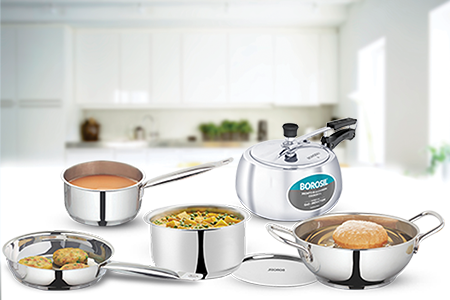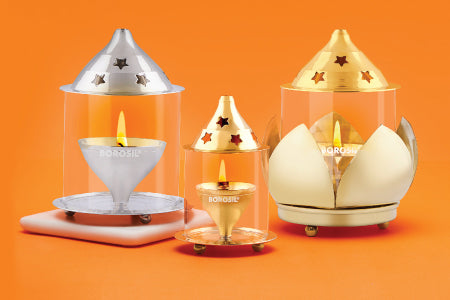
Different Indian Spices
Spice It Up! A Guide to the Vibrant World of Indian Spices
Indian cuisine has gained popularity all over the world. Due to its rich and flavourful dishes, the cuisine has captured food lovers' hearts and taste buds. While the beautiful colours and captivating aroma make the food even more appealing, the true hero of Indian cuisine are the Indian spices. These spices give the food its rich and compelling taste and carry several health benefits. Read on to learn all about the different desi spices and their unique characteristics.
List of Indian Spices and Their Uses
Below is a list of desi species that have enhanced the flavour of Indian food for centuries. Let us explore what they are and also their unique characteristics.
→ The Big Four Indian Spices

Cumin (jeera), coriander (dhaniya), turmeric (haldi), and cardamom (elaichi) are lovingly referred to as the "Big Four" Indian spices. Cumin seeds have a warm and earthy flavour and are known for their distinctive splutter and aroma. They are a staple in Indian cooking as they enhance the overall taste of any dish. Coriander seeds provide a citrusy and floral flavour that complements many Indian recipes. Turmeric is popular for its vibrant yellow colour, several medicinal uses and slightly bitter taste. Lastly, cardamom has a sweet and floral scent but a sharp and distinctive taste, which can add a delightful fragrance to both sweet and savoury dishes.
→ The Heat of Indian Spices

Indian cuisine is popular all around the world for its hot and spicy flavours. Chilli peppers play a significant role in this. Whether it is the fiery heat of red chilli (laal mirch) powder or the extreme spiciness of green chillies (hari mirch), these Indian spices add great depth and intensity to Indian food. Each region in the Indian subcontinent prefers the variety of chilli pepper. Each pepper has different heat levels and flavours. From using it to temper the food to mixing it with other spices and ingredients, the chilli pepper plays an important role in creating a harmonious balance of flavours and tantalising the taste buds.
→ The Fragrant Cinnamon, Cloves, and Nutmeg

Cinnamon (dalchini) and cloves (lawng) are the Indian spices that add a touch of warmth and sweetness, while Nutmeg brings an exotic fragrance to Indian cuisine. Cinnamon has a uniquely warm and sweet flavour, and hence it can be used in savoury and sweet dishes. On the other hand, cloves are popular for their strong aroma and slightly spicy and bitter taste. However, they are a must in several Indian curries and rice preparations. The exotic Nutmeg (jaiphal) has a sweet and nutty flavour, which is why it is used in very small amounts to enhance the taste of several curries, rice, and desserts. All three Indian spices provide potential health benefits as they are rich in antioxidants and anti-inflammatory properties.
→ Seeds of Flavor

Seeds such as mustard (rai), fenugreek (methi) and fennel (saunf) also play a significant role in Indian cooking. Each have a distinct flavour with which they impart a unique texture to various dishes. The two different varieties of mustard seeds are yellow and black. However, both varieties have a nutty and intense flavour and are generously used in curries, pickles, and vegetable dishes.
Fenugreek seeds taste bitter and find common use in spice blends and dal preparations. On the contrary, fennel seeds have a sweet flavour akin to anise and have health benefits such as improved digestion, etc. These seeds find use in savoury and sweet dishes and add a unique dimension to Indian cuisine.
→ The Exotic Essence of Indian Spices

Saffron (kesar), star anise (chakrphool), and asafoetida (hing) are prized possessions in many Indian kitchens. They add a distinctive and exotic essence to all Indian cooking. Popular as the "king of spices," Saffron looks reddish-brown but adds a beautiful golden hue and a delicate floral taste. It is used in several dishes, such as rice, desserts, and beverages. Star anise has a strong liquorice-like taste and finds use in spice blends as it gives a unique flavour to rice dishes such as biryanis and non-vegetarian curries. Asafoetida goes by the name "Hing" in the subcontinent and has a pungent aroma. While it is used in small quantities, it greatly enhances the flavour of lentil dishes and vegetable curries.
→ The Charm of Curry Leaves and Tamarind in Indian Spices

Curry leaves (karyapak) and tamarind (imli) add different tanginess and depth to Indian foods. Curry leaves have a delectable aroma and are generously used in South Indian cuisine. Tamarind is a souring agent in many Indian curries, chutneys, and rasam. It gives a tangy and subtly sweet taste to dishes and contributes to the complexity of flavours by creating a harmonious taste.
Spice Storage and Tips
If you want to maintain the flavour and freshness of Indian spices, you must store them properly. Whole spices are better at retaining flavour than powdered ones. Make sure you store whole and grounded Indian spices in airtight containers such as glass jars with lids or BPA-free jars. Keep them away from direct heat, sunlight and moisture.
Conclusion
Indian food spices add a lot of depth and complexity to the food. That is why they have been used for centuries and are now celebrated worldwide. Each of the many desi spices has distinctive flavours and adds a unique characteristic to the dish. Now that you know about the various Indian spices, you can use them to elevate your culinary experience.
Frequently Asked Questions
1. How long does Indian masala last?
Indian spices are generally good for up to three years when stored properly. Remember, whole spices last longer than grounded ones. You can check for a strong aroma and colour to determine whether to replace them.
2. Can I use Indian spices powder instead of whole ones?
Yes, you can use ground spices instead of whole ones in Indian recipes. Ensure you use the ground spices carefully, as they have a slightly more intense flavour than whole spices.
3. Can I store Indian spices in the refrigerator?
Store them in airtight containers in a cool and dry place and avoid direct heat, sunlight or moisture. While you can store it in the fridge, it can introduce moisture, compromising the quality and flavour.






















